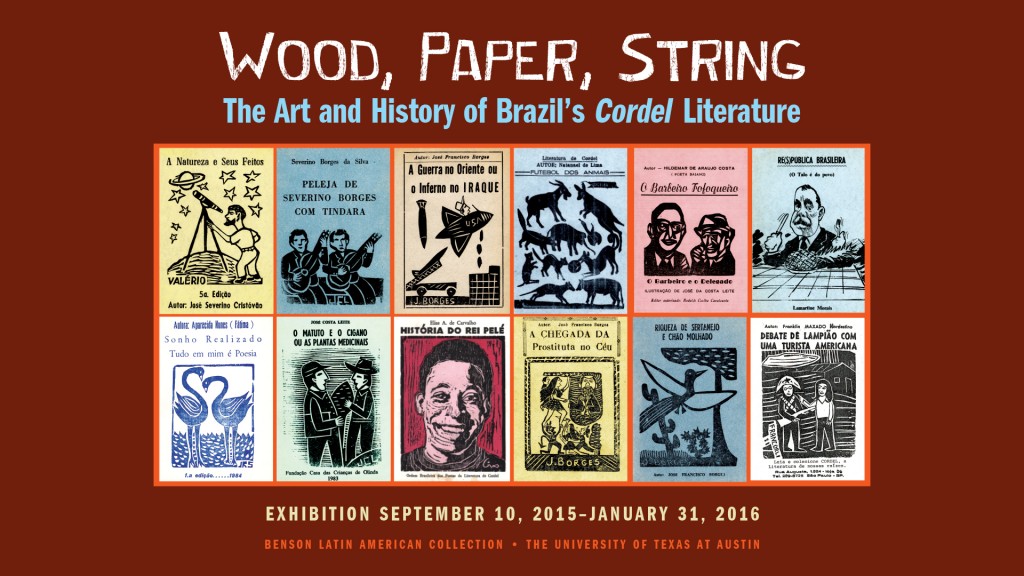Modern forms of independent publishing like zines owe a debt not only to the likes of Thomas Paine, but also to popular types of cultural or regional publications that emerged from a desire to capture an otherwise oral tradition for both broader diffusion and preservation.
The Brazilian literatura de cordel — literally “string literature” from the way that street vendors suspended the chapbooks — is a notable example of a form that gained traction due to its relatively low impact production requirements and visual appeal.
Mostly in the form of quartos, cordels are small chapbooks or pamphlets containing folk novels, poems and/or songs, and usually decorated by woodcut prints that became prevalent in the 19th and 20th centuries, mostly in the northeastern region of Brazil.
The Benson Latin American Collection recently opened an exhibit of cordel literature drawn from its collections, curated by Julianne Gilland with assistance from Teresa Wingfield and Carla Silva-Muhammad.
Wood, Paper, String highlights the art and history of the Brazilian popular literary. Featuring recent Benson Collection acquisitions, the exhibition explores cordel’s evolution from traditional to contemporary themes and showcases the woodcut illustration that is an iconic visual element of the genre.
Wood, Paper, String runs at the Benson Collection in the second floor gallery space through January 31, 2016, and is open to the public during regular hours.

